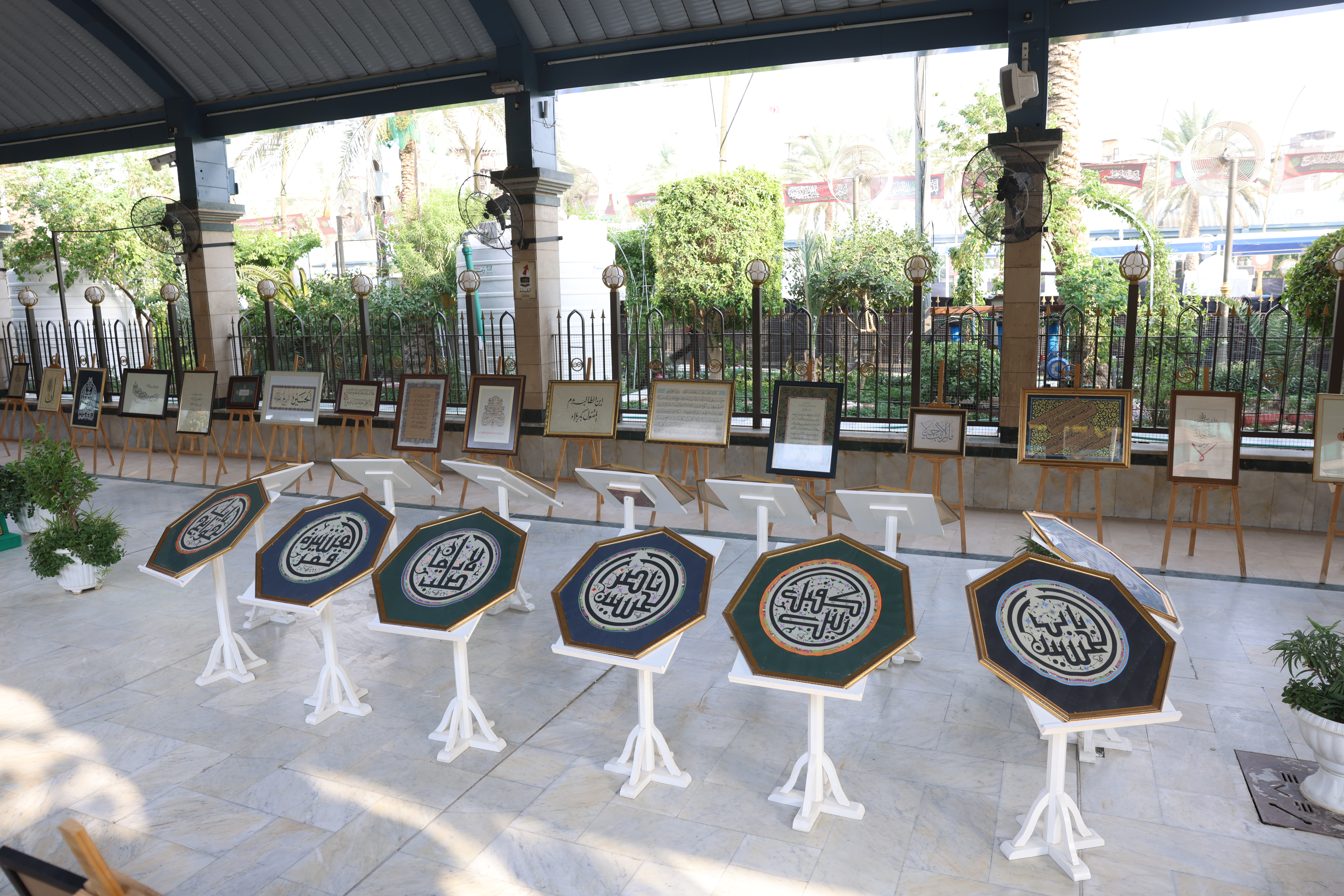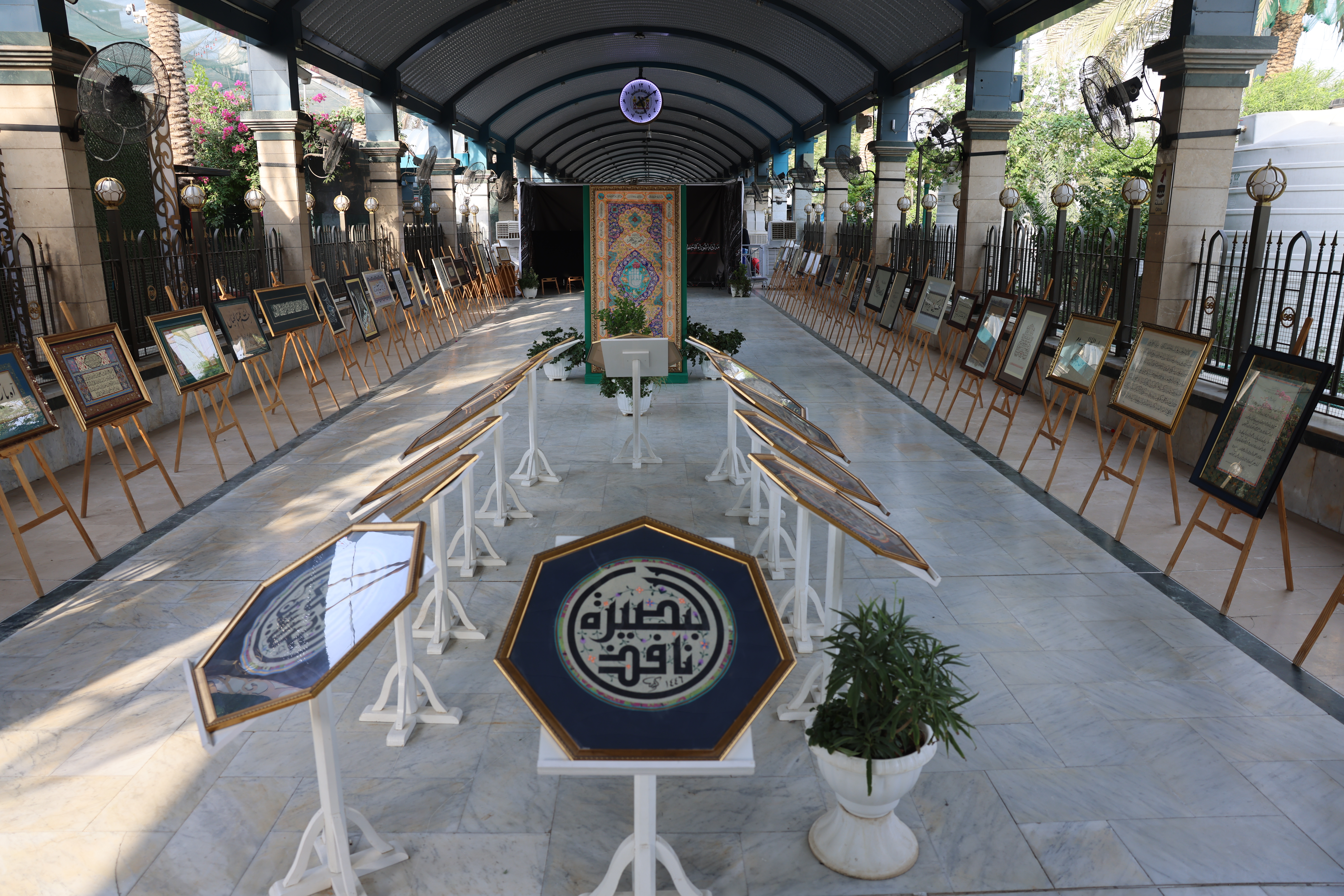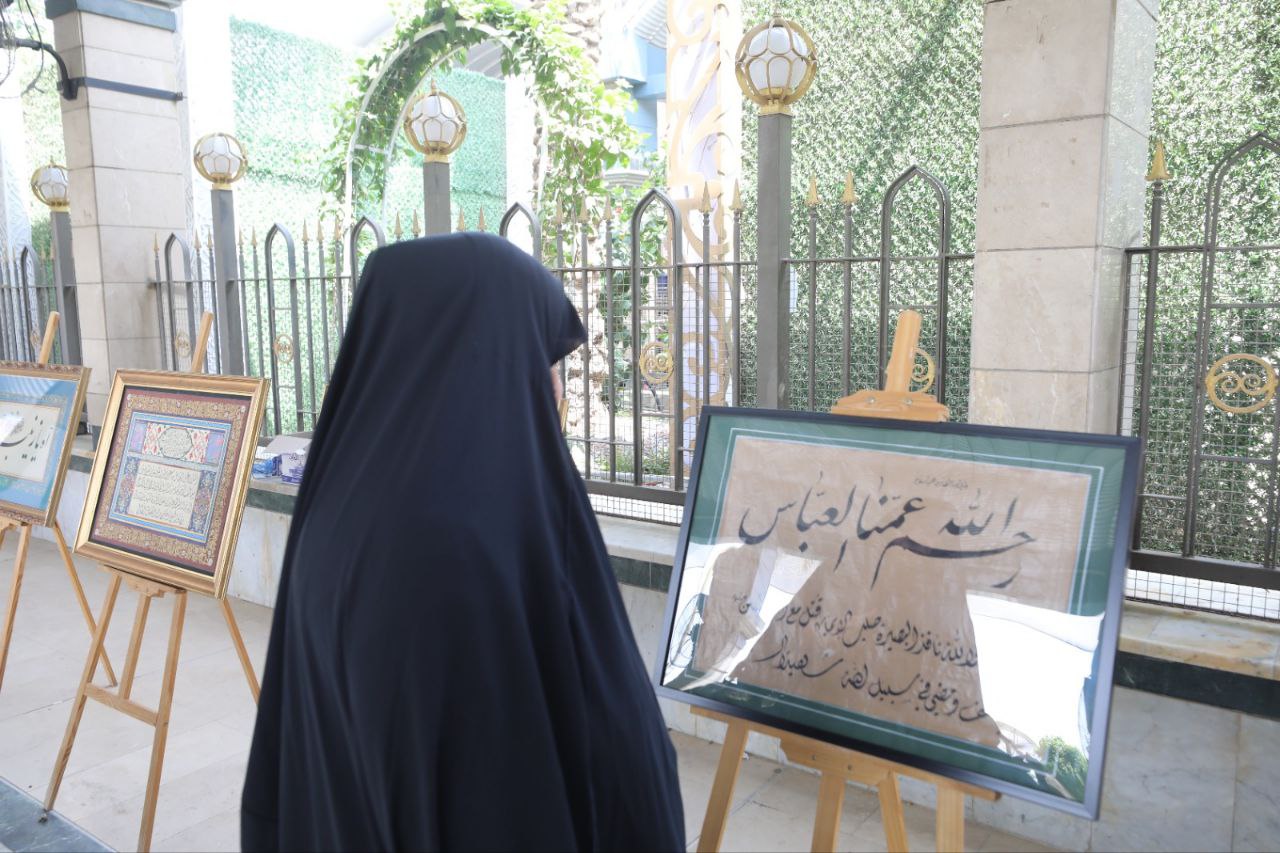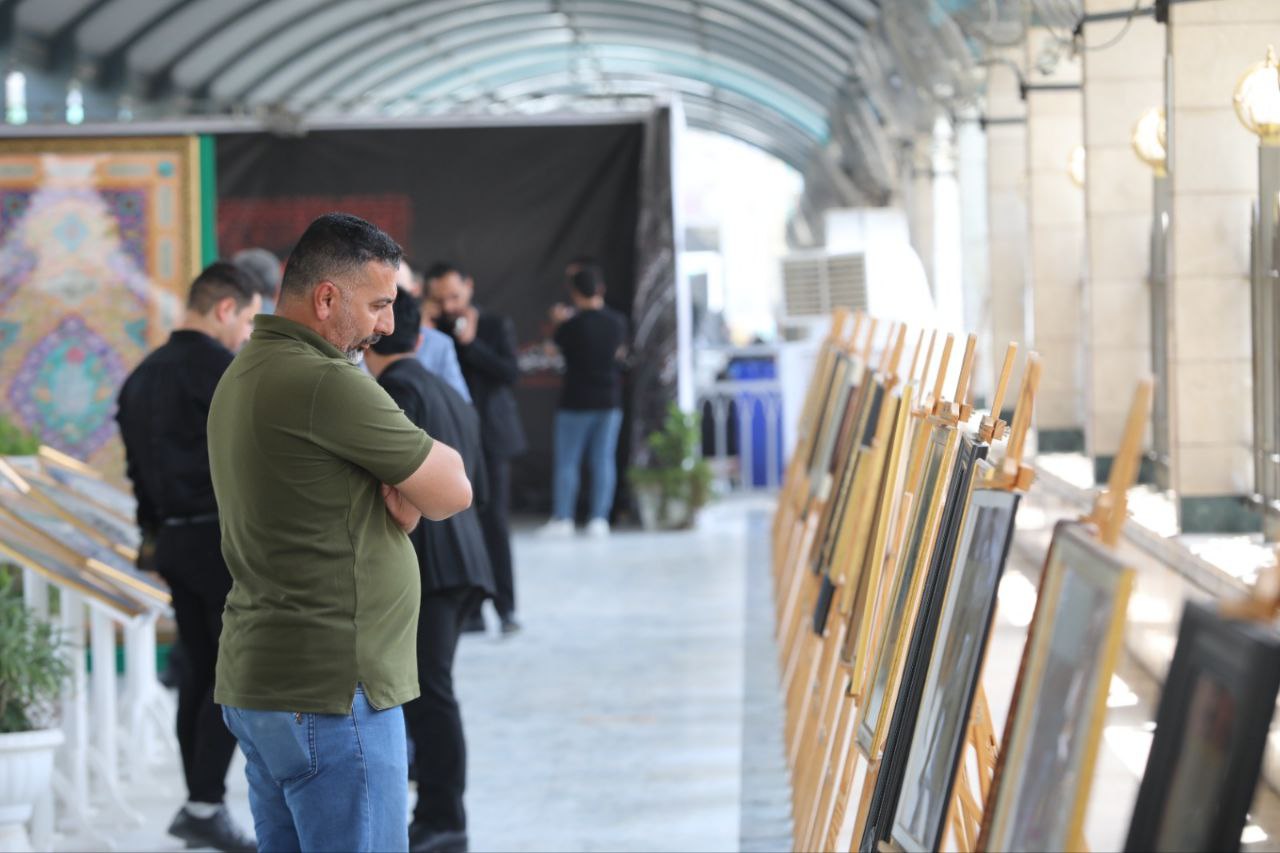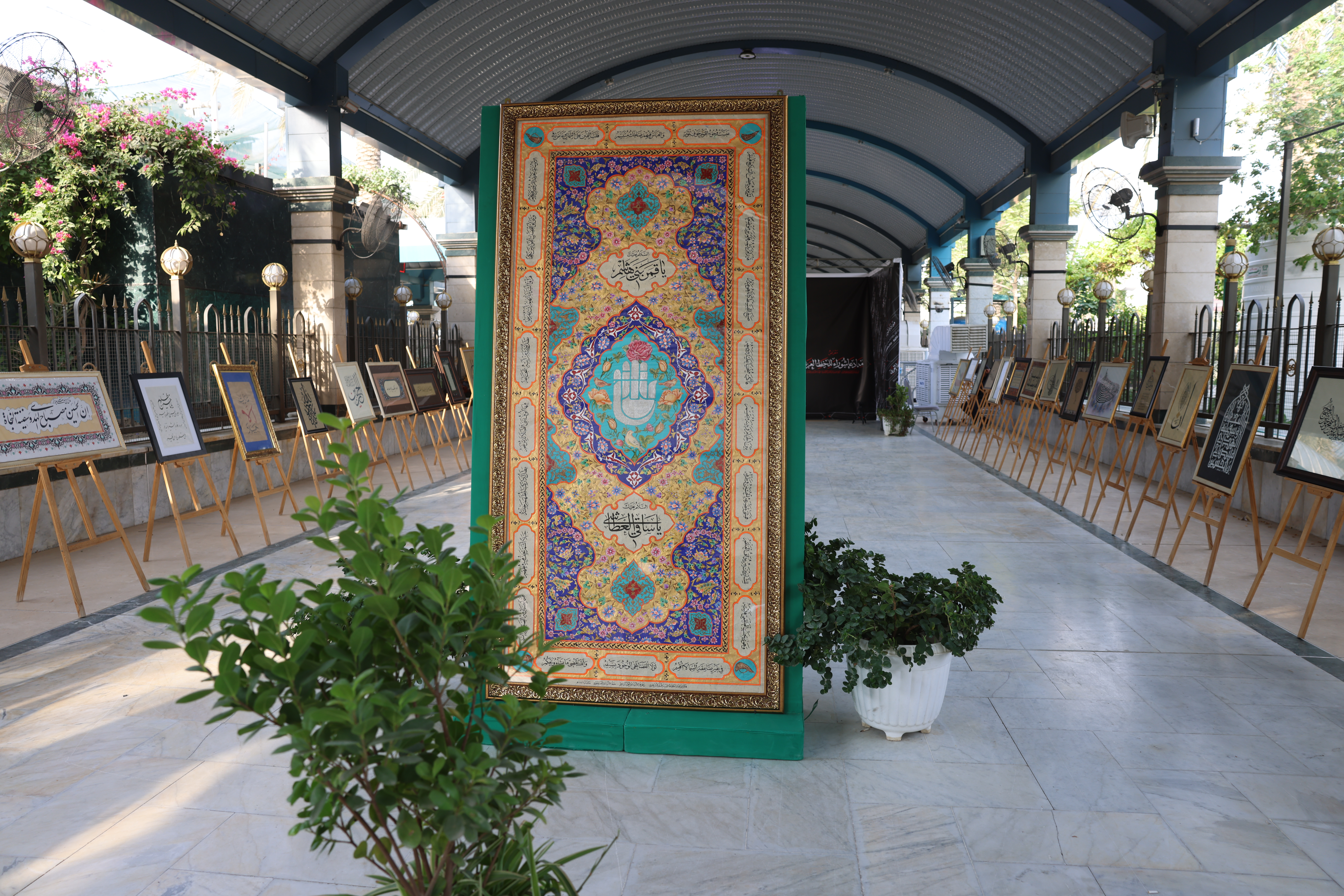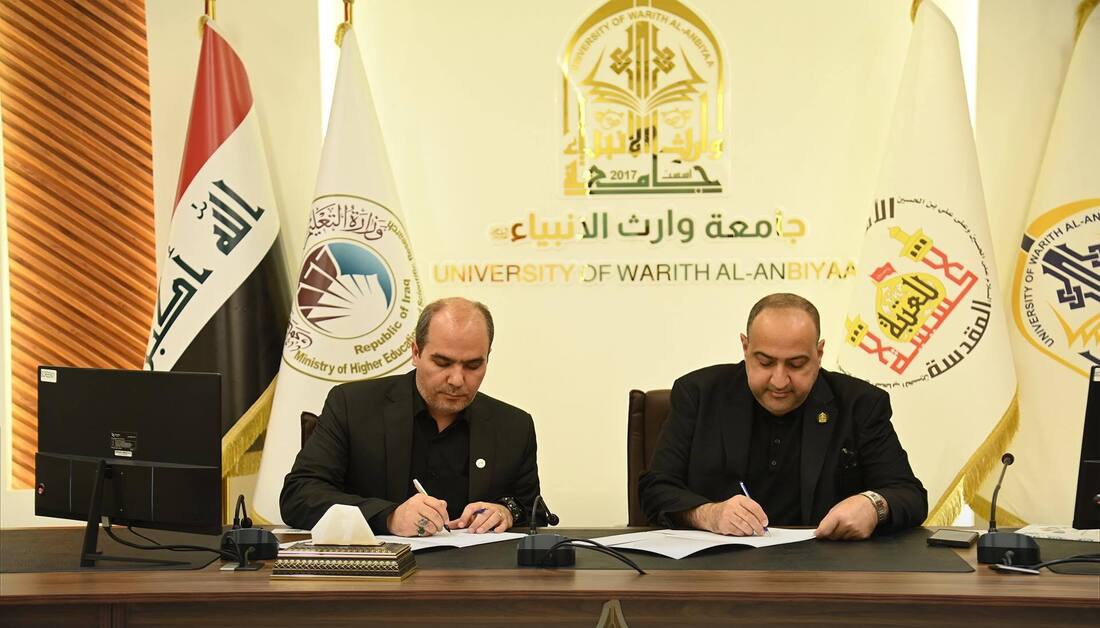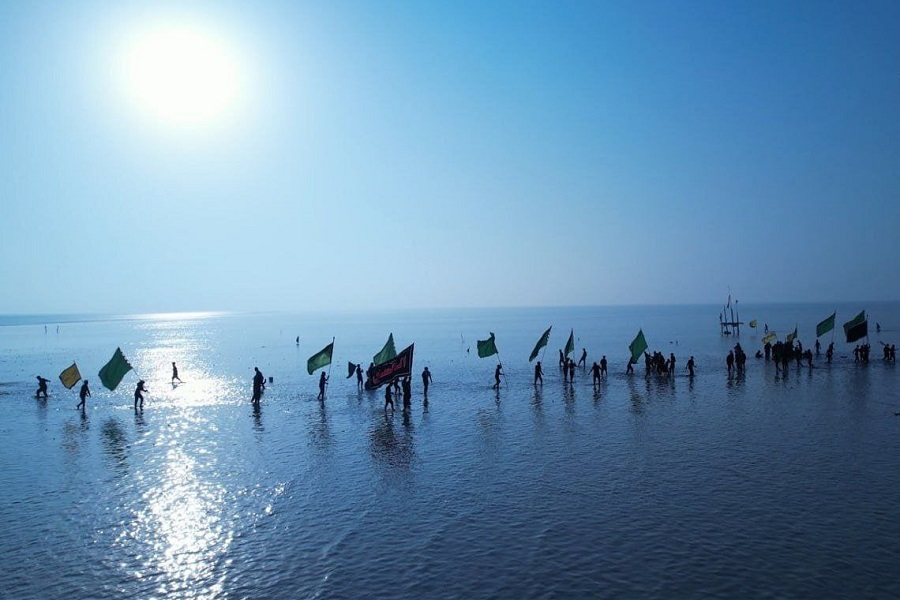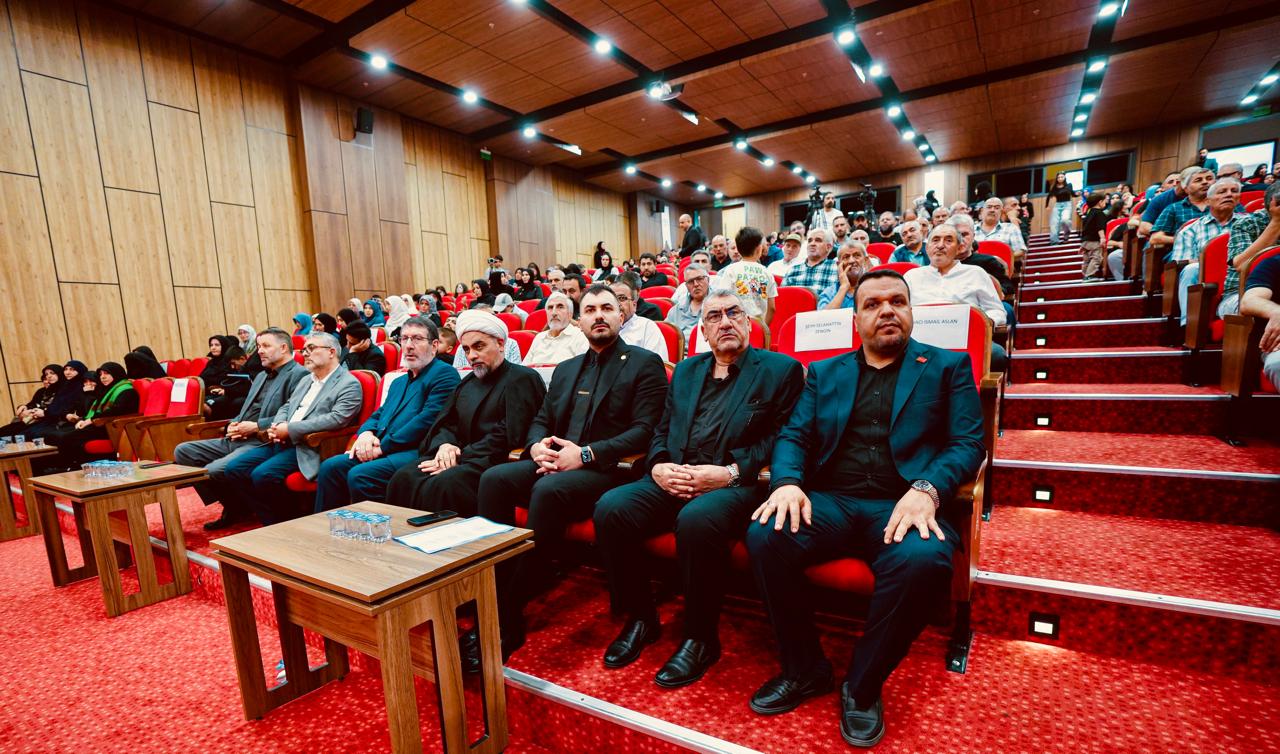Art exhibition honors Hussaini calligraphy with broad Arab and international participation
In commemoration of Imam Hussain (peace be upon him) and the eternal tragedy of Karbala, the Al-Qalam Center for Arabic Calligraphy, affiliated with the Quran House of the Holy Shrine of Imam Hussain (peace be upon him), held an art exhibition titled "The Birth of Ashura in Arabic Calligraphy." Taking place in the sacred space between the Two Holy Shrines (Bein Al-Haramein) during the days of Muharram, the exhibition drew a significant public audience and featured wide-ranging artistic contributions from both local and international calligraphers.
Calligrapher Muhammad Yaseen Al-Mushrafawi, Director of the Al-Qalam Center, stated in an interview with Karbala Now News Agency that this is the first time the exhibition has been held during Muharram. He explained that the aim is to use Arabic calligraphy as a spiritual and artistic medium to express the sorrow, heroism, and sacrifice exemplified by Imam Hussain (peace be upon him), his family, and his companions.
He described the exhibition as an important artistic and cultural event, featuring 100 calligraphic artworks from Iraq and abroad. Each piece focuses on the legacy of Imam Hussain (peace be upon him), conveyed through traditional Arabic calligraphy using texts from the Quran, prophetic sayings, pilgrimage phrases, and honorific titles.
A wide variety of calligraphic styles were presented, including Thuluth, Jali Thuluth, Diwani, Jali Diwani, Ruq'ah, and Naskh. Among the most notable displays were rare and large-scale manuscripts shown for the first time in this format, including a three-by-one-meter rendering of the Ziyarat of Aba Al-Fadhel Al-Abbas (peace be upon him).
Al-Mushrafawi also announced the release of a new book titled "Midad Ashura," the first and largest of its kind in the Arab and Islamic world. The book includes more than 400 original handwritten manuscripts dedicated to Imam Hussain (peace be upon him), all created by Al-Mushrafawi himself.
The exhibition featured live calligraphy workshops with participation from Iraqi artists and guests from various countries, including Iran, Oman, Bahrain, Saudi Arabia, the United Arab Emirates, Indonesia, Malaysia, and others. Over the course of three days, selected sayings and texts attributed to Imam Hussain (peace be upon him) were written as part of the workshop activities.
Participation was open to all. Out of more than 500 submitted manuscripts, a dedicated evaluation committee approved 100 works for exhibition.
Adnan Muhammad Jabbar, Head of the Department of Arabic Calligraphy and Islamic Ornamentation at the Institute of Fine Arts, commented on the exhibition’s artistic significance. He noted that the department’s participation in the Midad Ashura Festival included a workshop that introduced a modern artistic approach to Hussaini themes, combining traditional calligraphy with contemporary techniques. He emphasized that such exhibitions are vital platforms for artists to express religious occasions through creative interpretations, whether using Quranic verses, prophetic traditions, or historical sayings. All the showcased works centered around the values and lessons of the Karbala tragedy.
Calligrapher Ahmed Abboud also shared insights on his participation. He presented several pieces, including one titled “The Gate of Imam Abbas (peace be upon him),” which featured ornate calligraphy and decorative design. Another work, titled “Habeeb Al-Sama” (Beloved of Heaven), depicted a poetic scene from the martyrdom of Imam Hussain (peace be upon him).
Abboud concluded by saying that such exhibitions are a major source of inspiration for calligraphers. Whether for beginners seeking to learn or experienced artists looking to grow, each exhibition offers valuable opportunities for development and creative exchange. According to him, every new edition surpasses the last in both artistic quality and spiritual impact.
Ameer Al-Mousawi
